Argyrotaenia ljungiana
(Thunberg, 1797)
-
 Subfamily: Tortricinae, Archipini
Subfamily: Tortricinae, Archipini -
 Wingspan: 18-16 mm
Wingspan: 18-16 mm -
 Flight period: Jun - Aug
Flight period: Jun - Aug -
 Spread: Common
Spread: Common -
 Host plants: Polyphagous
Host plants: Polyphagous
Information
The Argyrotaenia ljungiana is a moth of the Tortricidae family, subfamily Tortricinae, with a wingspan of 18-16 mm.
It is distributed in almost all of Europe, it is absent from Portugal, Croatia, Bulgaria and Ukraine. *
Its range extends to the whole Palearctic ecozone with the exclusion of Japan.
In Italy it is absent from the islands. *
The Argyrotaenia ljungiana has thin and thin fore wings with a silver-white background color, streaked with gray; has markings
reddish dark brown, sprinkled with black; margins of the basal region and median bands are irregular. The costal fold is absent.
The rear wing is gray with whitish fringes. **, ***
Sexual dimorphism is not very evident, given at times by the more marked signs in the female and by the slightly ciliated antenna of the male.
The female lays her eggs in batches of 40-50, usually on the upper surface of the leaves of the food plant. They hatch in 10-21 days. ****
The newborn larvae skeletonize the underside of the leaf along the midrib, and then disperse.
In the next phase they feed on leaves closed by silky threads. Even pupation occurs in a silk cocoon in leaves closed by silk threads.
The pupa develops in 7-10 days.
The number of generations varies every year. In Poland, the Netherlands, the south of the British Isles and the northern regions of Italy,
the species is bivoltine, the first generation occurs in April and May, the second from the end of June to July or August.
In the north of the British Isles, it is univoltine, and adults are visible from late April to June.
In the Mediterranean area, the species has three generations per year. Argyrotaenia ljungiana overwinters in the pupa phase, in a cocoon of debris on the ground.
The egg is yellow, and turns brown during development.
The larva of Argyrotaenia ljungiana has a light green or yellowish green head, dark at the back with a yellowish green prothoracic plate
with blackish posterolateral stripe, light green abdomen, sometimes with brown shades.
The pupa is light brown found in a silk cocoon in leaves closed by threads, or wintering in a cocoon of debris on the ground.
Polyphagous species there are many plants it feeds on, among these we find: Abies sp. (fir), Acer sp. (maple), Artemisia vulgaris, Aster,
Betula (birch), Calluna (heather), Centaurea, Crataegus (hawthorn),
Dryas octopetala, Erica, Evonymus (envonym), Genista (broom), Gentiana pneumonanthe,
Helichrysum (Italian helichrysum), Hibiscus (hibiscus), Humulus (hop), Larix (larch), Malus (apple tree), Myrica, Phaseolus, Pimpinella Saxifraga,
Picea sp., Pinus sp. (pine), Prunus sp. (cherry, blackthorn, plum, almond, apricot), Populus sp. (poplar), Potentilla, Pyrus (pear),
Quercus sp. (oak), Ranunculus (buttercup), Rhamnus, Senecio, Solidago, Vaccinium, Vitis (Vine).
This species has become a minor parasite of Vitis (Vine) and Malus (apple tree).
* Lepidoptera mundi https://lepidoptera.eu/ - Fauna Europea https://fauna-eu.org/
** Bestimmungshilfe für die in Europa nachgewiesenen Schmetterlingsarten - http://lepiforum.de/
*** Bradley, JD; Tremewan, WG; Smith, Arthur (1973). Falene Tortricoidi Britanniche. Cochylidae e Tortricidae:Tortricinae.
**** Eurasian Tortricidae 2.0 - https://eurasian-tortricidae.linnaeus.naturalis.nl/
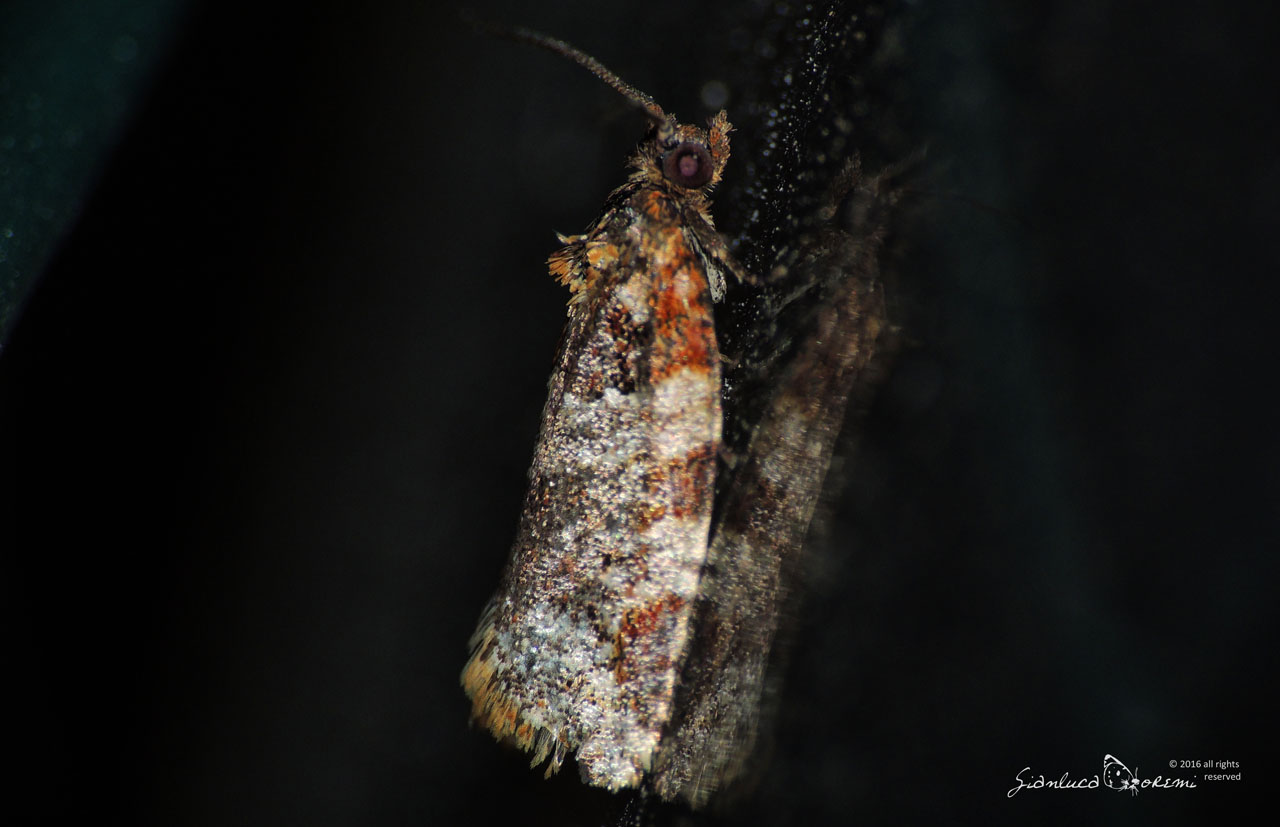
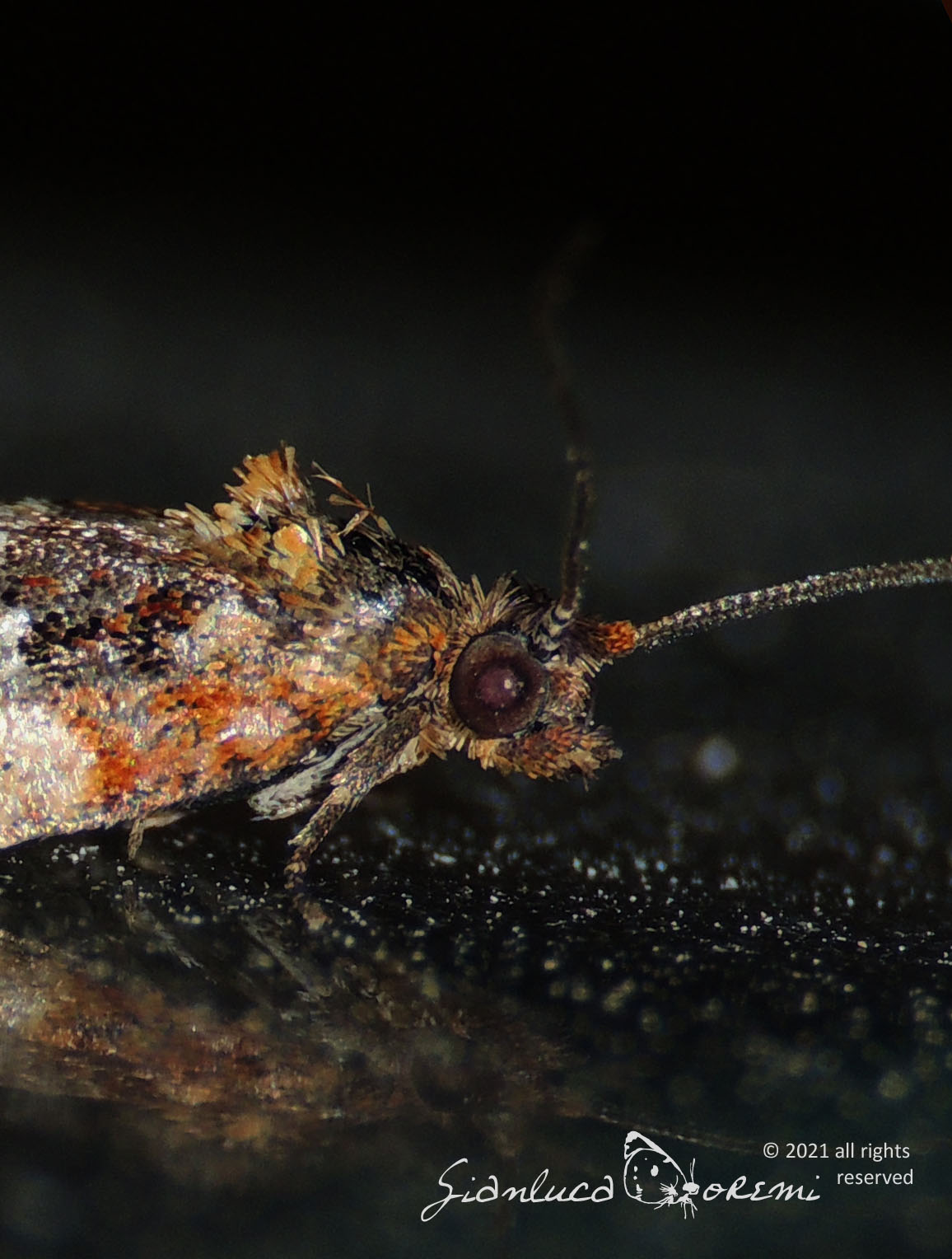
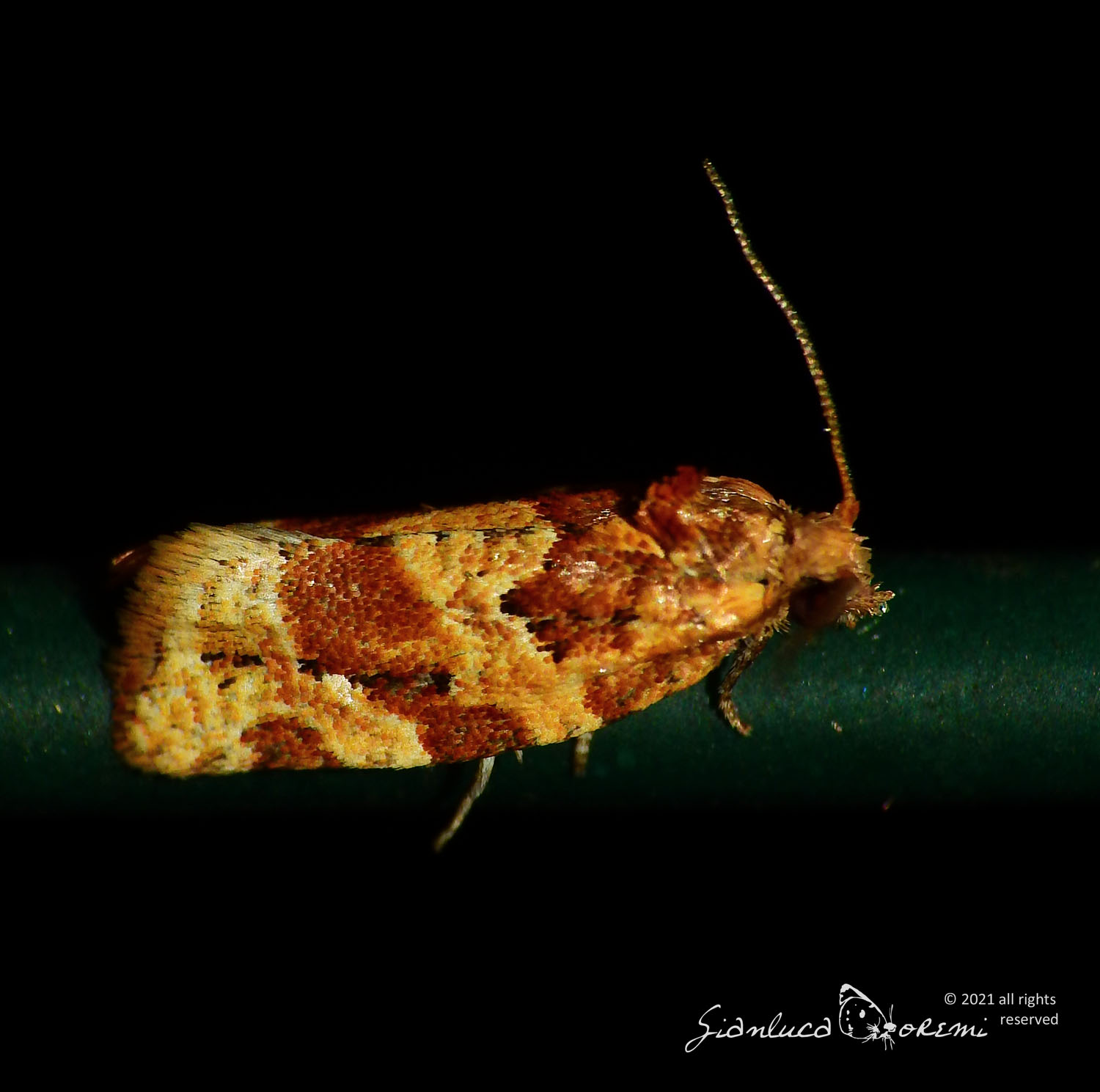
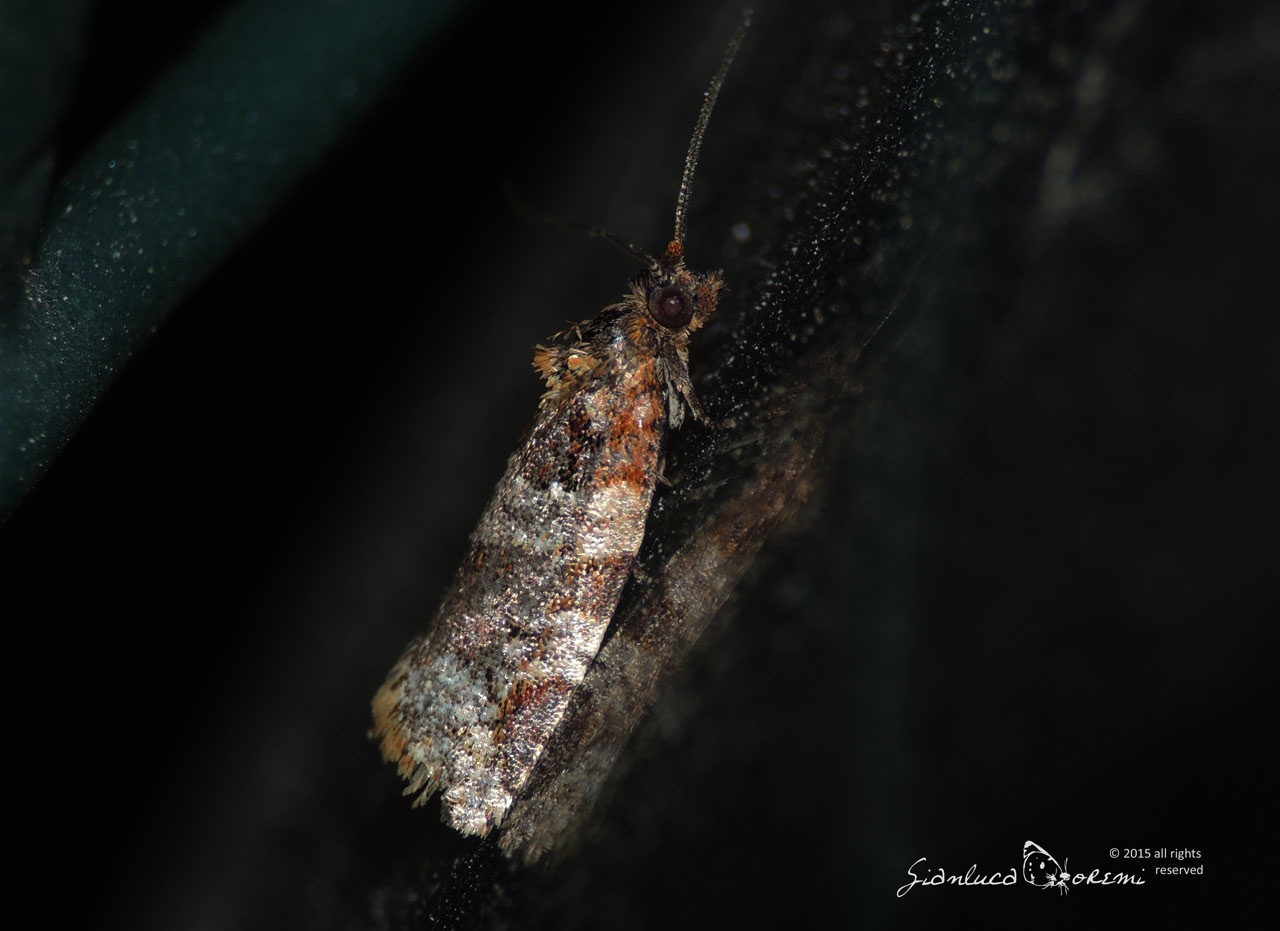
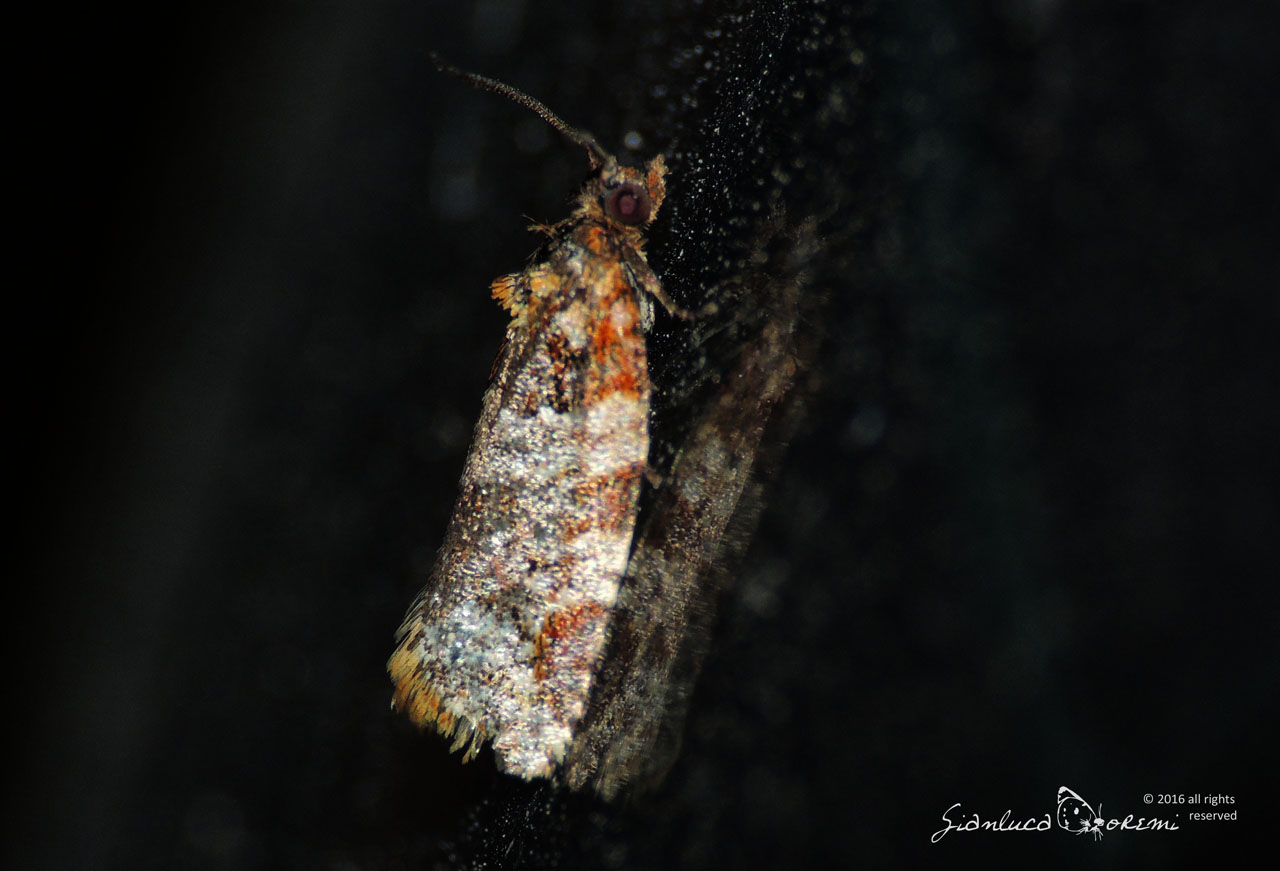


 EN
EN ITA
ITA
Social and publications